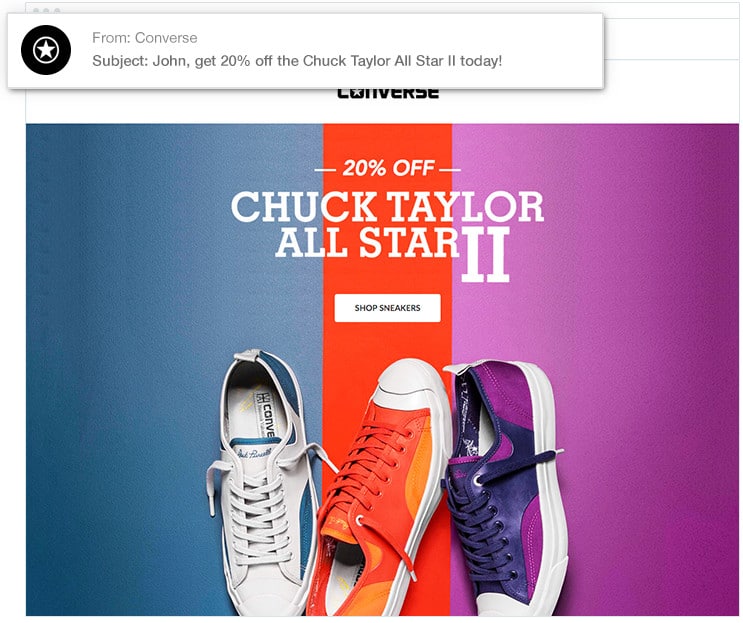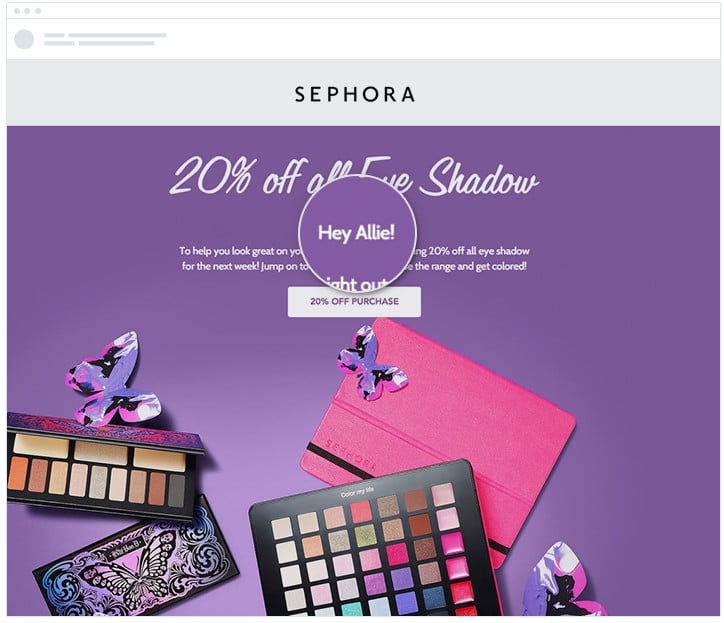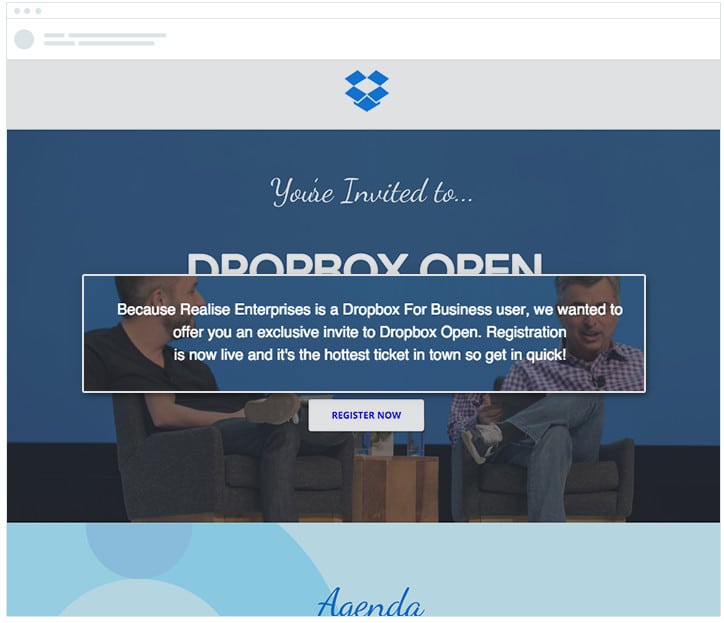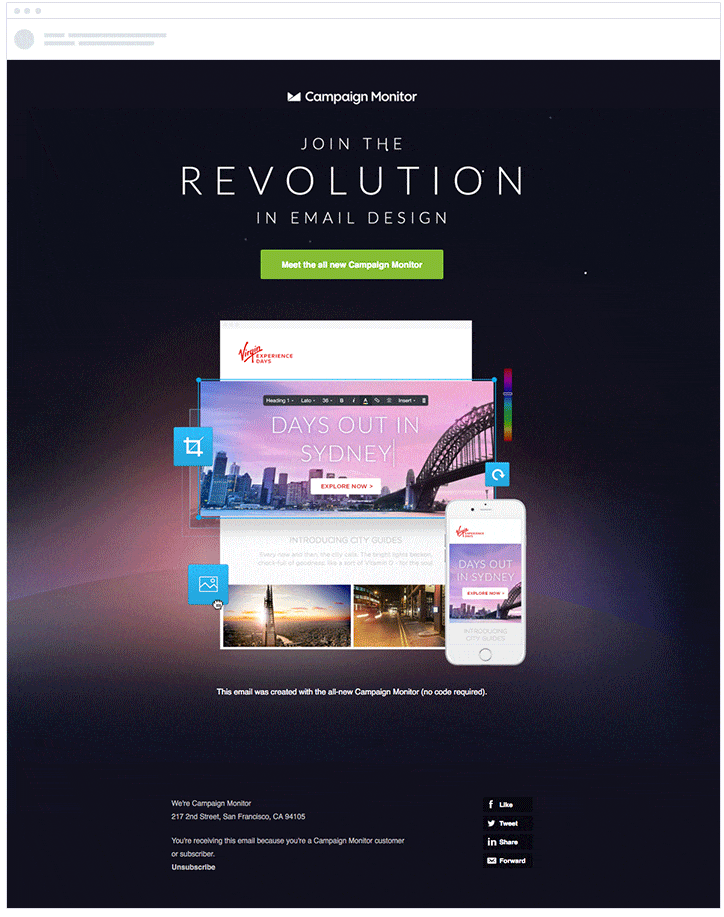3 ideas for A/B testing your next email campaign
A strategic email marketing campaign is a sure-fire way to improve your open, click-through, and conversion rates.
We know that email marketing can yield powerful results—email marketing is consistently cited as the best digital marketing strategy in terms of ROI. But it’s every marketer's goal to make email marketing decisions that will reach the most subscribers in personal and meaningful ways. The more your subscribers connect with your messages, and the more your messages serve their needs, the higher response rates you’ll see.
Back in the olden days of email marketing, a standard practice was to simply send a mass email at the first of the month, hoping that the messages would stick. With the advent of smart email service providers, it’s now possible to aggregate data to find out what appeals to different subscriber bases, and then use that data, along with personalization and automation features of an email service provider, to craft messages that resonate well with your target audience.
That’s not all! It’s also possible to A/B test your content to see which messages are yielding more positive results. Remember, one of the top ways to improve your results is continual testing, yet 53% of marketers never A/B test their emails.
If you’re part of that 53%, or even if you have tried A/B testing in the past but didn’t see the results you wanted, this article will come in handy. This post will present the top 3 ideas for A/B testing your next email campaign. As you use these strategies, you can use the results to make better email marketing decisions, fine-tune your messaging, and reach subscribers in ways you never thought possible.
What is A/B testing?
Before getting into the details of what to A/B test, let’s quickly review what A/B testing is. A/B testing, when it comes to email marketing, is sending one variation of your message to a subset of subscribers, and another variation to another subset. The goal is to determine which variation of your campaign will resonate better with customers. Then you can tweak your campaign based on the data and send the best email to all your subscribers.
What to A/B test
When it comes right down to it, you can A/B test just about anything. What you A/B test will depend on your ultimate goals and where your main conflicts lie. You can A/B test design, style, visuals, wordsmithing, content, email length, tone, and more. You don’t need to test every one of these email aspects every time. Instead, focus your efforts on the variables that have the most direct impact on conversions.
For the purposes of this post, let’s focus on the top three things email marketers typically test, and that will most likely yield positive results: subject lines, personalization, calls to action.
1. Subject Lines
You may be tempted to gloss over the subject line and fill it in with a generic or “close enough” type of subject line. This is a mistake.
The subject line is the first impression of every email. The subject line (along with the preview text) is the only thing your subscribers can see when your email reaches their inbox. It is what prompts subscribers to either open your email and read or delete it and move on.
There is power in a subject line and it’s important to get it right.
Of course, there are subject line best practices, such as writing like a friend, including emojis, personalizing, matching the subject line to the content, scanning for spelling errors, avoiding the word “newsletter,” and writing an email that hits the subject line length “sweet spot.”
These are all great places to start, and if you follow these best practices, you’ll most likely see results. For example, emails with personalized subject lines are 26% more likely to be opened. And, brands that use emojis have seen a 56% increase in their unique open rates, while including the word “newsletter” in your email subject lines decreases the click-through rate by 30%.
Following best practices yields results, but it’s only the first piece of the puzzle. What will help you land on the perfect subject line for your target audience is A/B testing. A/B testing will help you determine which subject lines yield the highest open rates and drive the most engagement.
Most email service providers make it easy to test two different subject lines. This means you can automatically send out subject line variations to a small subset of your list to see which performs best. Whichever subject line receives more opens will determine which subject line you should use for the rest of your list.
Here at Emma, we recently tested two subject lines listed above. Before reading the results, which one do you think performed better?
We were surprised to learn “Let’s do this, 2017” had a higher response rate than “This year’s going to be one for the books.” Perhaps it was the length, the use of the emoji, or a combination, but based on the A/B test results, we were able to send a subject line that resonated better with our subscribers.
Remember, your subject line is your main chance at enticing subscribers to open your email and engage with you. Take the time to get it right by A/B testing your subject line.
2. Personalization
We’ve already determined that subject lines with personalization can experience higher open rates. According to the study, Power Words in Email Subject Lines, the subscriber’s name is the single most impactful word you can add to your subject line, increasing opens by over 14%.
You can use a personalization tag to dynamically insert a subscriber’s name into the subject line. This ensures you insert the right name into the subject line of the right subscribers. After all, you don’t want “Maureen” to get an email that was intended for “John.”
While personalization works for many brands, it’s important to A/B test it for yourself. You can A/B test whether or not personalizing the name lead to higher engagement rates. You can even test where the personalization of the name should be included in the email (beginning, middle, end).
Additionally, you may be wondering you should personalize using a name, referencing an event you know the subscriber attended, a purchase you know they made, etc.
While it’s easy to focus on personalizing subject lines, it’s also important to remember that’s not the only part of an email you can personalize. You have several other personalization options. Let’s look at some examples from top brands to help guide you.
Personalize images & copy
You can personalize the images and copy, like this example from Sephora. Try A/B testing with the name and without.
Personalize business names
Let’s say you’re a B2B marketer, instead of a B2C marketer. No problem! You can use the same tactics to personalize the company name, or your contact at the company name just like in this email to “Realise Enterprises,” from “Dropbox.” It’s worth it to test whether or not the company responds to you sending a generic invitation or a personal company invite.
Personalize based on customer data
Chances are, you have customers that have different preferences, purchasing patterns, behaviors, interests, locations, genders, and much more. Part of successful A/B testing comes with testing personalizing based on this demographic and behavioral data. Let’s look at one powerful example.
Our friends at Campaign Monitor recently A/B tested the use of dynamic content for personalization based on location. Subscribers in various locations got different images that matched up with their location.
Their results were a positive indication that they should use dynamic content in the rest of their emails. By making the images in this email campaign personalized to location, they were able to increase our email click-through rate by 29%.
3. Calls to Action
The last bit of an email every marketer should consider A/B testing is the call to action. The CTA is what prompts your subscribers to complete an action. This could be making a purchase, signing up for a webinar, requesting more information, etc.
Regardless of what your call to action is, it’s important to determine what call to action will prompt your subscribers to move forward. Here are some things you can A/B in a call to action:
Copy
A/B testing the actual words you use can help you settle on the best phrasing.
Button
You can test whether or not you should use a call-to-action button or a simple phrase with a link. If the answer is a button, then you can further A/B test to determine what color, size, or shape you should use.
Position
Should the call to action come at the beginning of the fold? Under the fold? In the middle of the copy? At the end? Where should the alignment be? A/B testing will provide you with the answers.
After your subject line, your call to action may just be the most important aspect of your email. It is the key to conversions and can affect your email marketing ROI. Take the time to A/B test your call to action to help you get it right.
Wrap up
If you’ve used A/B testing in the past, but haven’t experienced success, it’s time to try again. A/B testing, especially the three elements listed above, will provide you with insights into how to craft your email campaigns successfully.
Remember, with the help of an email service provider like Emma, it’s easy to A/B test. We can guide you through the simple process and show you the results that will lead to you making better email marketing decisions. Get started here!
MOST RECENT ARTICLES
Want to engage your audience and grow your brand? Try Emma's robust easy-to-use product today.



















